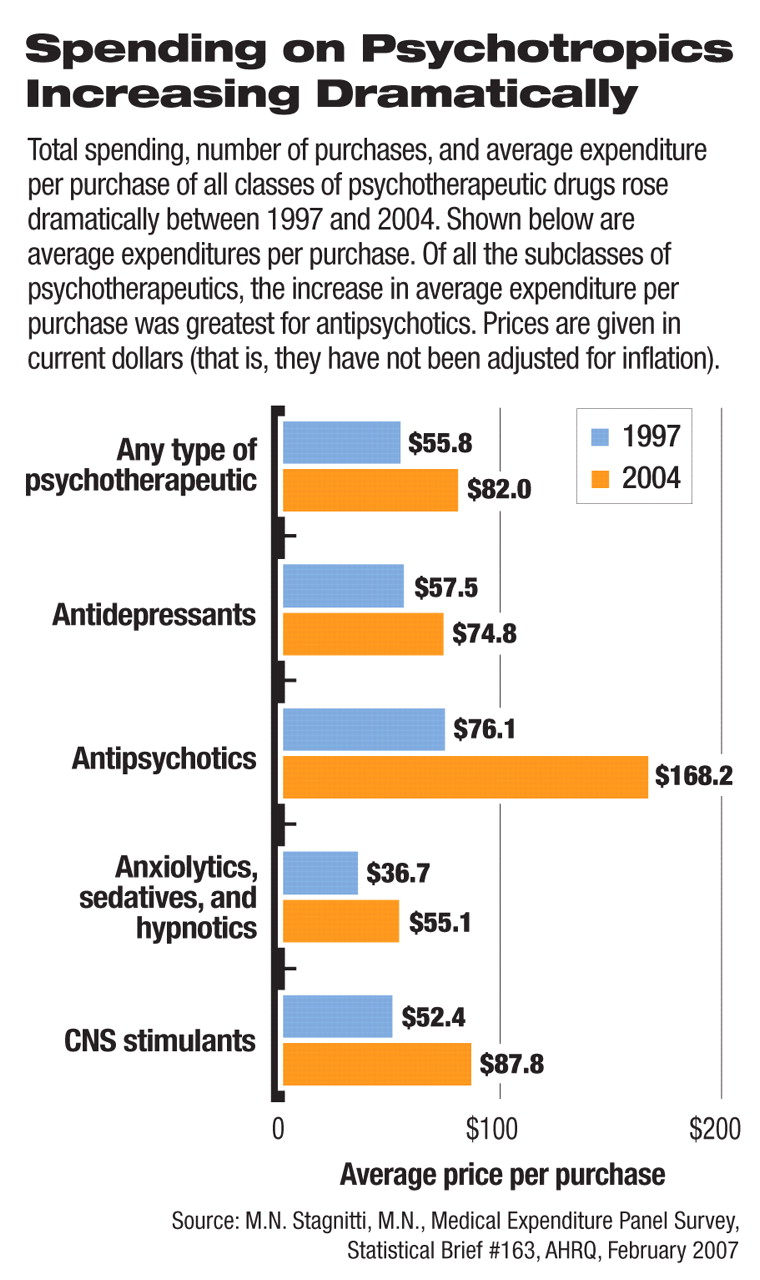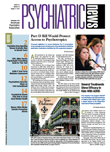Spending on psychotherapeutic medications increased dramatically from 1997 to 2004, according to a report by the federal Agency for Healthcare Research and Quality (AHRQ).
In 2004 total expenditures on prescribed psychotherapeutic agents was at least 2.5 times as high as in 1997, rising from $7.9 billion to $20 billion.
In the same time span, the total number of purchases of psychotherapeutic agents increased substantially from 141.9 million purchases to 244.3 million. The number of individuals reporting purchasing a psychotherapeutic medicine rose from 21 million to 32.6 million.
And from 1997 to 2004, the average per-purchase drug expenditure for a psychotherapeutic agent increased from $55.80 to $82 (see chart).
The figures are in a “statistical brief” issued by the AHRQ that draws on findings from the Household Component of the Medical Expenditure Panel Survey (MEPS-HC) on total expenditures, number of purchases, number of people who made a purchase, and average price per purchase for the therapeutic class of prescribed psychotherapeutic agents and the therapeutic subclasses within that medication category.
The subclasses are antipsychotics; central nervous system (CNS) stimulants; antidepressants; and anxiolytics, sedatives, and hypnotics.
Only prescribed medications purchased in an outpatient setting are included in the estimates. Over-the-counter drugs are excluded from the estimates, as are prescription medications administered in an inpatient setting or in a clinic or physician's office.
The report documents sharp increases in total spending, numbers of purchases, and average per-purchase expenditure for all of the subclasses from 1997 through 2004. Here are some highlights of the findings:
•
Antidepressants: Total expenditures on antidepressants more than doubled, rising from $5.1 billion in 1997 to $12.1 billion in 2004, with the number of purchases of antidepressants rising from 88.3 million to 161.2 million. The total number of persons reporting purchasing an antidepressant increased from 15.3 million in 1997 to 24.8 million in 2004.
•
Antipsychotics: Total expenditures on prescribed antipsychotics tripled, rising from $1.3 billion to $4.1 billion. In the same time period, the total number of purchases of antipsychotics increased from 17.4 million to 24.5 million, and the total number of individuals reporting purchasing an antipsychotic rose from 2.2 million to 3.4 million.
Of all the subclasses, the average price per purchase increase was greatest for antipsychotics, which more than doubled from $76.10 to $168.20.
•
Anxiolytics, sedatives, and hypnotics: Total expenditures in this subclass more than doubled, going from $0.9 billion to $2.1 billion. In the same time span, the total number of purchases of anxiolytics, sedatives, and hypnotics increased from 24.5 million to 39.0 million.
•
CNS stimulants: Total expenditures on CNS stimulants nearly tripled, rising from $0.6 billion to $1.7 billion.
MEPS-HC is a nationally representative longitudinal survey that collects detailed information on health care utilization and expenditures, health insurance, and health status, as well as a wide variety of social, demographic, and economic characteristics for the civilian noninstitutionalized population. It is cosponsored by the AHRQ and the National Center for Health Statistics.
The report is posted at<www.meps.ahrq.gov/mepsweb/data_files/publications/st163/stat163.pdf>.▪

